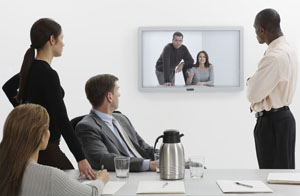 In the late 1970s, AT&T introduced its "Reach Out and Touch Someone" campaign. The tag line instantly struck a chord because it humanized the potential of century-old technology. The telecom giant wanted people to understand the telephone wasn't simply a device—it was a way to connect people instantly despite differences of distance and to fulfill our human need to communicate and collaborate.
In the late 1970s, AT&T introduced its "Reach Out and Touch Someone" campaign. The tag line instantly struck a chord because it humanized the potential of century-old technology. The telecom giant wanted people to understand the telephone wasn't simply a device—it was a way to connect people instantly despite differences of distance and to fulfill our human need to communicate and collaborate.
Communication technology has continued to evolve, and insurers have more ways to reach out and touch someone today than ever before.
"Collaboration is a huge emerging trend in all aspects of the insurance value chain, whether internally or externally," says Karlyn Carnahan, a principal in Novarica's insurance practice.
Recommended For You
Want to continue reading?
Become a Free PropertyCasualty360 Digital Reader
Your access to unlimited PropertyCasualty360 content isn’t changing.
Once you are an ALM digital member, you’ll receive:
- Breaking insurance news and analysis, on-site and via our newsletters and custom alerts
- Weekly Insurance Speak podcast featuring exclusive interviews with industry leaders
- Educational webcasts, white papers, and ebooks from industry thought leaders
- Critical converage of the employee benefits and financial advisory markets on our other ALM sites, BenefitsPRO and ThinkAdvisor
Already have an account? Sign In Now
© Touchpoint Markets, All Rights Reserved. Request academic re-use from www.copyright.com. All other uses, submit a request to [email protected]. For more inforrmation visit Asset & Logo Licensing.







